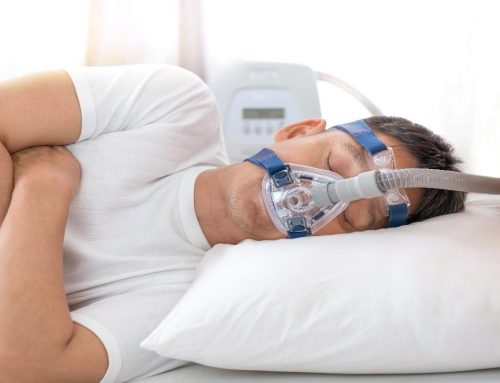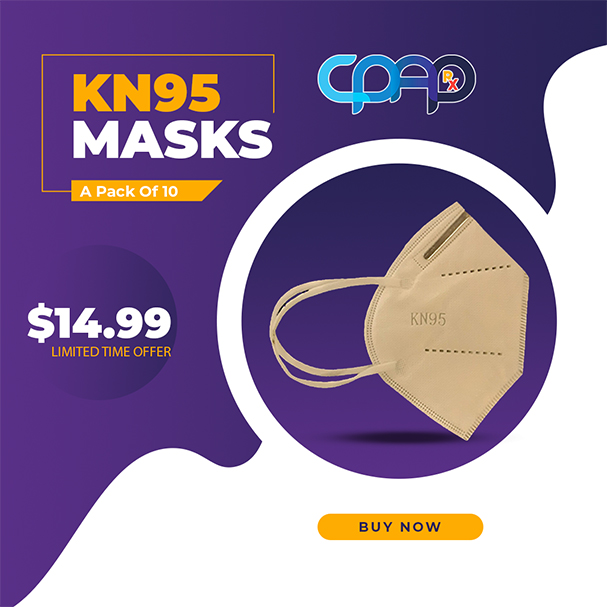Making sure something fits you properly isn’t something you think of as overly essential, but in some cases, it could mean life or death. CPAP machines are used to force air into the lungs of patients with severe sleep apnea because they have trouble breathing on their own through the night. There are various types of sleep apnea that happen for various reasons.
Types of Sleep Apnea
- Obstructive Sleep Apnea – This is the apnea that happens when throat muscles relax in your sleep and can obstruct your airways. Obstructive sleep apnea is the most common form of sleep apnea.
- Central Sleep Apnea – This is the apnea that happens when your brain doesn’t send the signals to your muscles to make you breathe autonomously, and your body just doesn’t breath.
- Complex Sleep Apnea Syndrom – This is when the patient has both obstructive and central sleep apnea. It is also known as treatment-emergent central sleep apnea.
Some forms of apnea, like obstructive sleep apnea, are more common, no two are exactly alike, and no two treatments are exactly alike. From the mask, they wear (nasal or full) or the pressure they have it set on (range from between 4 and 20 cmH2O) or even their humidity settings. Making sure said the vital medical equipment is clean and adequately fitted is extremely important. Some of the issues you may come across with parts include: leaking mask or hose, not having the proper CPAP mask, equipment starts deteriorating, not having the machine adequately calibrated, and not having it cleaned on a daily basis.
Leaking Mask or Hose
A leaking mask or hose could happen for various reasons such as older equipment may need to be replaced. The manufacturer suggestion for replacing the CPAP mask is every three months to a year. But there are plenty of CPAP users that either can’t afford or don’t feel the need to replace it so often and is used for usually a year or more, at which point the mask is probably not doing its job, and air can escape. Leaking air can mean you aren’t getting the pressure you need, and your machine may not be working as effectively. The same with the connecting hose, they say to have it replaced every 3 to 6 months. For the same reasons mentioned before it may not get replaced as often as needed and may not be performing as well.
Not Having the Proper Mask
 Usually, during the sleep test, they measure your oxygenation and how often you stop breathing. The main criteria for choosing between a nasal mask and a full facial mask is: how high of a pressure setting you need and whether you sleep through your nose or mouth more at night, as well as any allergy issues you may have. If you have allergies, breath through your mouth while you sleep, or need a higher pressure level on your machine, you will most likely need a full facial mask. If you mostly breathe through your nose while you sleep and don’t need a high airflow pressure setting, then a nasal mask would work well for you. If you for some reason end up buying or using the wrong one for you then the machine will not be as useful for you.
Usually, during the sleep test, they measure your oxygenation and how often you stop breathing. The main criteria for choosing between a nasal mask and a full facial mask is: how high of a pressure setting you need and whether you sleep through your nose or mouth more at night, as well as any allergy issues you may have. If you have allergies, breath through your mouth while you sleep, or need a higher pressure level on your machine, you will most likely need a full facial mask. If you mostly breathe through your nose while you sleep and don’t need a high airflow pressure setting, then a nasal mask would work well for you. If you for some reason end up buying or using the wrong one for you then the machine will not be as useful for you.
Equipment Starts Deteriorating
Along with that same line if your gear is starting to fall apart (liners, cushions, headgear), then you need to replace it. Small fixes with tape or glue might work for a short-term basis, but overall you need to get your equipment replaced on a semi-regular basis along with daily cleaning. If the seals on the equipment start to go, you lose air pressure. If your nose or face cushions are wearing thin, the plastic equipment could leave marks on you and irritate your face. Also, if the headgear is starting to stretch itself out or stretch itself thin, then the material may not seal to the patient’s face as well as it could, and air pressure can escape.
Not Having the Machine Properly Calibrated
Most machines you buy through some durable medical equipment company and when you pick it up with your prescription the technicians there will program the device to the prescribed pressure. There is usually some lock or way to keep the pressure set at the specified amount so you can’t accidentally set it to high and hurt yourself or set it too low and it is not sufficient enough. Not having the machine correctly calibrated is more of a rare instance but can happen if you buy it from another person or some other pre-owned online stores that come with it either reset to default or set to the last patient’s settings, you should never use any settings except those prescribed for you.
Having it Cleaned on a Daily Basis
 Your CPAP map needs to be cleaned on a daily basis with warm soapy water and set out to dry. Preferably right after you wake up, so it is clean for later that night.
Your CPAP map needs to be cleaned on a daily basis with warm soapy water and set out to dry. Preferably right after you wake up, so it is clean for later that night.
You need to clean it whether you have a nose mask or a full facial mask, and then once a week you should sanitize it with warm water and vinegar. If you don’t clean out the equipment molds, fungi, and bacteria can start to grow in the equipment and possibly cause illness. In more recent years companies have made devices to help with the upkeep of your CPAP machine. VirtuClean CPAP cleaner and sanitizer is a cpap cleaning device that can sanitize any part of your CPAP equipment with the push of a button and thirty minutes; it even has heated tubing adapter. This does not get rid of your daily cleaning, but it can make your sanitizing faster could help you get in the routine of sanitizing more often.
Face masks are the second most essential part of a CPAP set up after the actual machine. They come in various sizes, types, and headgear for them. There are accessories like seals, cushions, and CPAP headgear to keep your equipment correctly fitted to your face to get the most efficiency from your machine and keep you healthy. There are tales of people who regularly use their CPAP machine but forget to one time, and then they don’t wake up. When your equipment isn’t fitted or working correctly, it’s one step closer to not even using the machine.




 Shop
Shop



